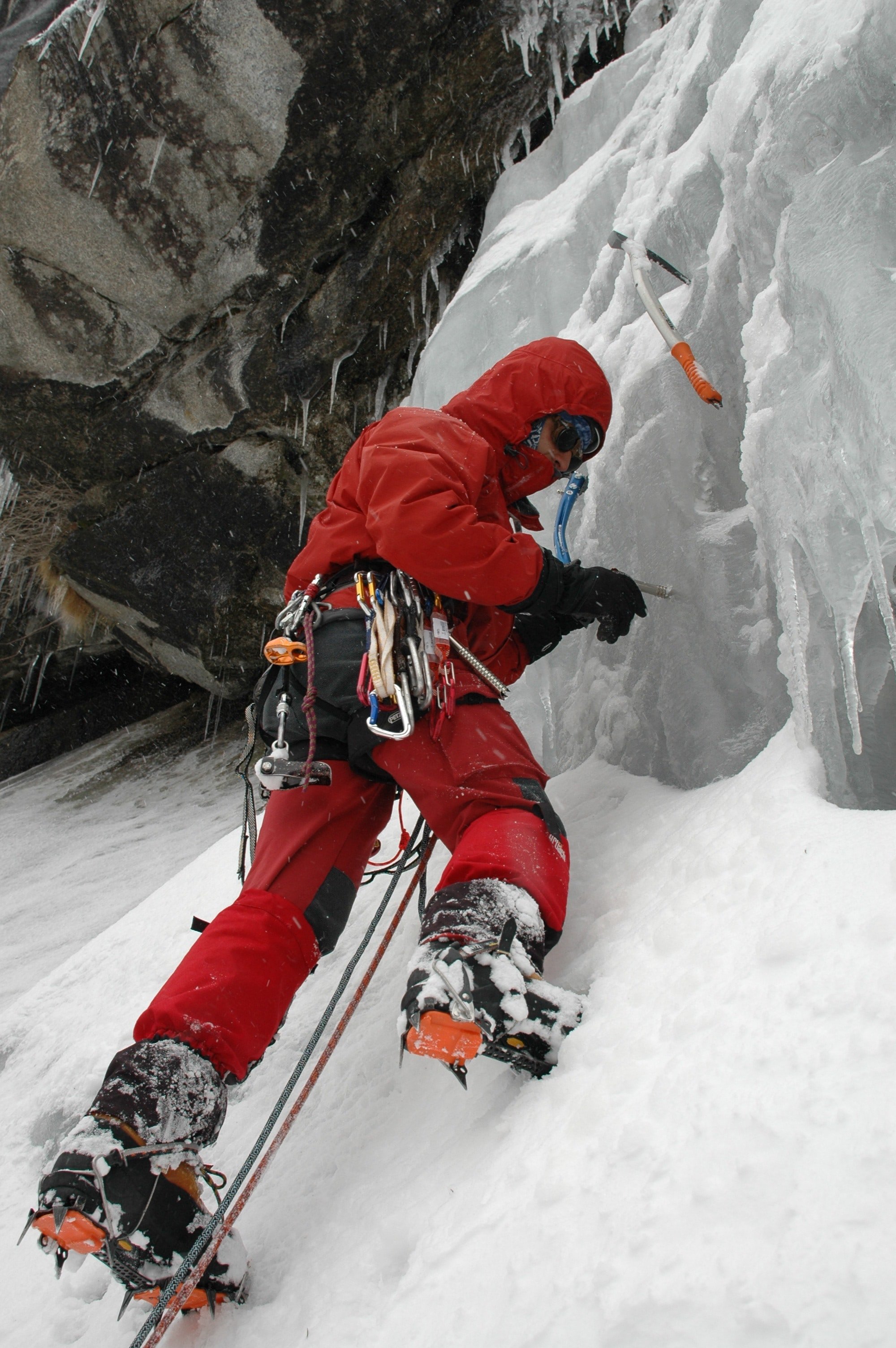Experiences, skills and fitness required for Cholatse 6440M expedition - Namas Adventure
Cholatse 6440M
Experiences, skills, and fitness requirements
What level of climbing experience is necessary to consider oneself sufficiently prepared for this challenging climb? What are the prerequisites for climbing Cholatse?
Climbing Cholatse 6440M demands a high level of technical mountaineering skills. Aspiring climbers should possess a strong foundation in high-altitude mountaineering and alpine-style climbing techniques, including scrambling, traversing, and navigating steep rocky or icy terrain. Proficiency in utilizing fixed-line ropes and climbing gear is essential for a successful ascent. Additionally, climbers must be acclimatized to and comfortable with cold conditions.
Climbers following their successful expeditions on peaks such as Alpamayo, Ama Dablam, or Annapurna IV aim for the Cholatse climb. This beautiful peak is situated in the Everest region, which is a popular destination among those who thrive on the demands of alpine and extreme altitude climbing. Some notable examples of such peaks include Ama Dablam, Lhotse, Mount Everest, Baruntse, and Manaslu. These peaks generally may or may not be on the same technical levels as Cholatse climb but having experience climbing such peaks would qualify one to undertake the challenging ascent of the Choaltse expedition.
For those considering this climb, we strongly advise having both alpine climbing technical and traditional fixed-line style skills. As you prepare for this challenging expedition, it is important to remember that climbing Choalatse demands the highest level of fitness, experience, and technical knowledge.
Pre-requisites (At least two or more):
Lobuche East & Island Peak, Chulu West, Khumbu 3 Peak expeditions, Alpamayo, Ama Dablam, Mt. Blanc (Similar 4000M - 6000M peaks or higher) and Ice climbing WI4+, and multi-pitch climb M5(rock or ice), rock climbing grade up to 5-9+/- to 5.10 a,b,c.
Skills required
Choaltse is a unique climb requiring both alpine style and fixed rope climb. Sherpa guide members will determine where to climb in fixed and where to climb using alpine climbing skills.
How to tie a figure 8, stopper knot at the end of the rope, clove hitch knot, fix ice screws, and set up anchors when climbing.
Ascending/jumaring on fixed-line and abseiling with super 8 belay device or ATC descender in multi-pitch sections. You will have to be very very careful and well-rehearsed on abseiling since there is no room for errors when descending. You only get that one chance when coming down so you will have to be super careful. And for safety backup have ‘prusik knot’ tied on the main rope.
Climbing, scrambling and traversing with crampons on for long-duration on ice, rock, and snow surface.
Multi-pitch climb (rock or ice), rock climbing grade up to 5-9+/- to 5.10 a,b,c. Indoors or outdoors. (For reference check out our - Alpine grading)
Performing snow arrest and safely getting back up if by any chance climbers slip and slide.
Ice climbing WI-4+, Mixed climbing M5 grade. If you are confident in lead climbing this is a bonus.
Fitness level - 5
Preparing for an expedition such as Choaltse requires more than just physical fitness; it requires a significant level of dedication and effort. To succeed on this demanding climb, individuals must have exceptional overall fitness, including the ability to acclimatize to high-altitude environments, as well as endurance, strength, and mental toughness.
To provide a general indication of the level of fitness required, we have established a fitness level of 5 for our Choaltse expedition. This requires individuals to be able to run a half marathon to a marathon distance, or cycle for 5-6 hours. For those who prefer hiking, being able to carry a load of 25 to 30 kilograms and hike for 6 hours+ is a good benchmark. Additionally, completing a triathlon is a strong indicator that you are physically capable of handling the physical and mental demands this expedition requires.
In addition to cardio and endurance training, a good strength and muscle endurance training routine is crucial for success on Choaltse. This can be achieved through a variety of approaches, such as participating in any muscular strength and muscular endurance training routines. Kettlebell training programs are one of our favorites. However, it is important to note that this training should be done under the guidance of a professional trainer or coach to ensure that it is tailored to an individual's specific needs and goals.
Given the challenging nature of this expedition, previous experience in high-altitude climbing is highly recommended. This will not only help individuals prepare mentally and physically for the demands of altitude and terrain but will also allow them to focus on the technical aspects of the climb rather than just the physical demands. By prioritizing physical and mental preparation, individuals will be well-equipped to tackle the demanding ascent of Choaltse and achieve their mountaineering goals.
Conclusion
Participating in a Choaltse expedition requires a solid foundation of previous high-altitude climbing experience and a strong understanding of the various climbing techniques which are mentioned above. If you are unable to find mountains to climb in your area, a deeper level of indoor and outdoor rock climbing can help you maintain your skills and fitness levels. Ice climbing during the winter season is also a great way to stay hands-on with your climbing skills.
While most commercial expeditions take care of the logistics, it is still important to be prepared and to have a good understanding of the technical aspects of the climb. It is important to note that the success of an expedition depends on the competence of all team members, from operational management to field guides. Once you have signed up and have the necessary skills and experience, it is critical to commit to a physical training regimen in order to be fully prepared for the demands of the expedition.
Let’s take on this technically challenging peak.
Go. Live Your Story




